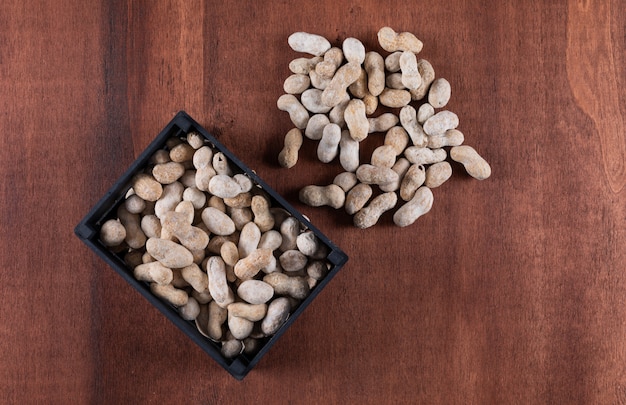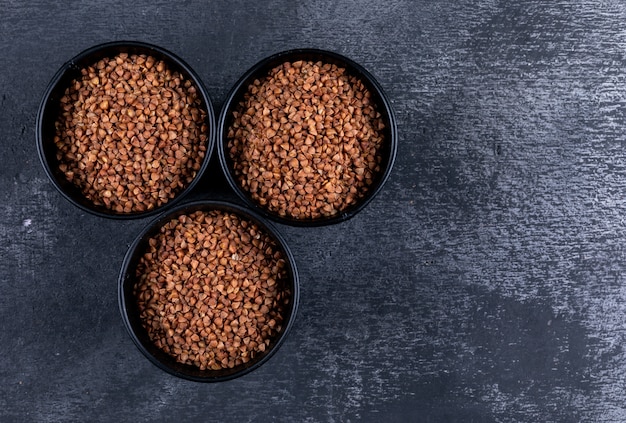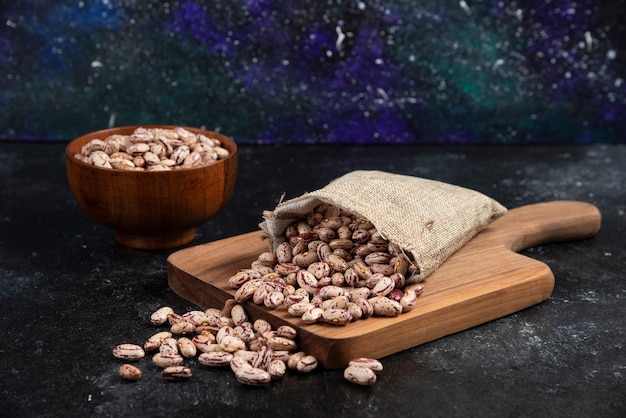pinto beans are a staple in my kitchen. They're incredibly versatile, boasting a mild, earthy flavor that shines in everything from hearty stews to vibrant salads. But let's be honest, cooking them from scratch can feel like a chore. I've been there, spending hours simmering them on the stove only to end up with a pot of mushy, bland beans. Not exactly the culinary triumph I envisioned!
That's why I've decided to spill the beans (pun intended) on my secrets to perfect pinto beans. This comprehensive guide covers everything from selecting the right beans to achieving that ideal texture, tackling those pesky questions about soaking and cooking times. By the end of this guide, you'll be a bean-cooking maestro, ready to impress even the pickiest eaters with your newfound culinary skills.
(Part 1) Choosing the Right Beans

The journey to perfect pinto beans starts with choosing the right ingredients. Just like you wouldn't use the wrong ingredients in a cake, you wouldn't want to start with subpar beans. Let's dive in!
Freshness First
The first thing I check is the expiry date. It's all about freshness. Stale beans can lead to inconsistent cooking times and a less satisfying flavour. Always choose beans that are close to their best-before date for the best results.
The Label Speaks Volumes
Next, give the packaging a good read. You'll often find different types of pinto beans, even within the same brand. Look for "small," "medium," or "large" labels. For me, medium-sized beans are the way to go. They hold their shape beautifully during cooking, resulting in a satisfying texture. But feel free to experiment with different sizes and see what you like best.
Colour Matters
You might be surprised to learn that pinto beans come in various colours. Some are creamy white, others have a subtle brown hue, and some have tiny brown flecks like a speckled egg. It's entirely down to personal preference. But if you crave a more intense flavour, go for the brown ones. They have a more earthy profile, making them perfect for hearty stews and chili.
The Organic Debate
Organic beans are often seen as a healthier and more sustainable option. It's a personal choice, and if you can afford it and care about environmental impact, go for organic. But remember, even regular beans can be a nutritious and delicious part of your diet.
(Part 2) Prepping the Beans: Soaking, Sorting, and Washing

You've got your beans, now it's time to get them ready for their culinary debut. Think of it as prepping for a big event – you want to make sure they look their best and are ready to shine.
Sorting and Washing: A Quick Check
First things first, give the beans a quick check. You might find a few stray pebbles or bits of debris hiding among them. It's a bit of a chore, but it's worth it to ensure a clean batch of beans. This is a perfect task for a lazy afternoon, something you can easily do while watching your favorite show.
Once you've sorted them, rinse them thoroughly under cold water to remove any dust or dirt that might be clinging on. This is especially important if you're planning to cook them without soaking.
The Soaking Debate: A Tale of Two Camps
Ah, the great soaking debate. Some swear by it, while others think it's a waste of time. I'm firmly in the "soaking" camp. I find it softens the beans, making them cook faster and producing a more tender result. Plus, it helps reduce the chances of bloating and gas, which is a bonus, right?
Soaking Techniques: Two Paths to Tender Beans
If you're convinced by the soaking benefits, there are two popular methods:
- Overnight Soak: The traditional method. Soak the beans in cold water overnight in the refrigerator. Simply place them in a large bowl, cover them with plenty of water, and let them rest until morning. It's a hands-off approach that allows the beans to soak up the water slowly.
- Quick Soak: A faster option for those short on time. Bring the beans and water to a boil, then remove from heat and let them soak for one to two hours. It's less time-consuming, but I find that the overnight soak produces a more tender texture. It really comes down to your schedule and preference.
(Part 3) Cooking Your Pinto Beans: Stovetop Methods

Now, it's time to cook those beans! This is where things get exciting, but don't worry, it's not as complicated as you might think. I'll guide you through it step by step, and you'll be a bean-cooking expert in no time.
Basic Stovetop Method: A Classic Approach
This is the most common method, and it's surprisingly straightforward. You'll need a large pot. Remember, bigger is better. You want enough space for the beans to move around freely and cook evenly.
Here's how to do it:
- Add the drained and rinsed beans to the pot.
- Pour about 6 cups of fresh water into the pot, ensuring the water level is about 2 inches above the beans.
- Bring the mixture to a boil over high heat. Once it's bubbling away, reduce the heat to a gentle simmer, cover the pot, and cook for 1-2 hours, or until the beans are tender.
- Keep an eye out for foam that forms on the surface during cooking. Skim it off with a spoon. It's excess protein and can make the beans taste slightly bitter.
- After cooking, check the beans for tenderness. You want them soft but not mushy. If they're still a bit firm, add a little more water and continue cooking for another 10-15 minutes.
Adding Flavor: A Symphony of Tastes
Here's where things get fun! While the beans simmer, you can add all sorts of flavors. Experiment with a bay leaf, a sprig of thyme, a few garlic cloves, a pinch of salt, or a bit of cumin. Let your creativity guide you! I find that a bay leaf and a few cloves of garlic add a lovely richness and depth to the flavor.
(Part 4) Cooking Your Pinto Beans: instant pot Method
Now, let's talk about the Instant Pot. This modern marvel is a game-changer for bean cooking. It makes life so much easier, cooking them perfectly every time, and it requires significantly less hands-on time compared to the stovetop method.
Instant Pot Instructions: Effortless Bean Cooking
Here's how to cook pinto beans in your Instant Pot:
- Rinse and drain your beans.
- Add the beans, 6 cups of water, and any desired seasonings to the Instant Pot. I often use a teaspoon of salt, a bay leaf, and a few cloves of garlic.
- Close and lock the lid, ensuring the steam release valve is set to “sealing.”
- Select the “Manual” or “Pressure Cook” setting and set the timer for 30-40 minutes. The exact time will depend on the size and age of the beans. Consult your Instant Pot manual for specific instructions.
- When the timer goes off, let the pressure release naturally for about 10 minutes before manually releasing the remaining pressure.
- Carefully open the lid. Give the beans a quick check. If they're still a bit firm, pressure cook them for another 5 minutes.
- Enjoy your perfectly cooked beans.
(Part 5) Storing Your Cooked Beans: Keeping Them Fresh and Flavorful
You've cooked up a batch of delicious beans, and you want to make sure they stay fresh and flavorful. Don't worry, I've got you covered.
Refrigeration: The Fridge is Your Friend
For the best results, store your cooked beans in an airtight container in the refrigerator. They'll keep well for about 4 days. Adding a little extra water to the container helps keep them moist and prevents them from drying out.
Freezing: Stock Up for Later
You can also freeze cooked beans for up to 3 months. Transfer them to a freezer-safe container or bag, leaving a bit of space at the top for expansion. Label the container with the date so you know when they were frozen.
When you're ready to use your frozen beans, defrost them overnight in the refrigerator or by giving them a quick soak in hot water. You can even defrost them directly in the pot on the stovetop.
(Part 6) Troubleshooting Common Bean Problems: Solving Those Culinary Dilemmas
We've covered the basics, but what about those pesky problems that can crop up? I've been there, and I've learned a few tricks along the way. Let's tackle those common bean dilemmas together.
Beans Not Tender: A Common Mishap
This is a frequent problem, especially if you haven't soaked your beans properly. The fix? Simply add a bit more water and continue cooking them until they reach your desired tenderness. If they're still firm after an hour or two, you might have encountered some stubborn beans. Don't worry, it happens. Just give them a bit more time.
Beans Too Mushy: A Sign of Overcooking
On the flip side, if your beans are too mushy, you've likely overcooked them. It happens to the best of us. There's not much you can do to fix them once they're overcooked, but you can definitely use them for other dishes that call for mashed beans, like bean dips or spreads.
Beans Foamy: A Normal Occurrence
As I mentioned before, foam may form on the surface of the beans as they cook. It's perfectly normal and doesn't affect the flavor. Just skim it off with a spoon and keep cooking.
(Part 7) Creative bean recipes: A culinary adventure
Now, we've gone through all the essentials, but let's get down to the fun part – actually using those delicious beans in your cooking. I have a few go-to recipes that I love to share. They're simple, flavorful, and perfect for any occasion.
1. Classic Pinto bean chili: A comfort food Icon
This is a real crowd-pleaser and a perfect comfort food for a chilly evening. It's so simple to make, and you can get creative with the toppings. Here's a basic recipe:
Ingredients:
- 1 tablespoon olive oil
- 1 onion, chopped
- 2 cloves garlic, minced
- 1 green bell pepper, chopped
- 1 teaspoon chili powder
- 1/2 teaspoon cumin
- 1/4 teaspoon oregano
- 1 (15-ounce) can diced tomatoes, undrained
- 2 cups cooked pinto beans
- 1 cup vegetable broth
- Salt and pepper to taste
Instructions:
- Heat the olive oil in a large pot over medium heat.
- Add the onion and garlic and cook until softened, about 5 minutes.
- Add the bell pepper, chili powder, cumin, and oregano and cook for 2 minutes.
- Stir in the diced tomatoes, cooked pinto beans, and vegetable broth. Bring to a boil, then reduce heat to low, cover, and simmer for 30 minutes.
- Season with salt and pepper to taste.
- Serve hot with your favorite toppings, such as shredded cheese, sour cream, chopped onions, cilantro, or avocado.
2. Pinto bean salad: A Light and Refreshing Delight
This salad is bright, refreshing, and perfect for a light lunch or a side dish. It's packed with flavor and nutrients. Here's what you need:
Ingredients:
- 1 cup cooked pinto beans
- 1 cup chopped romaine lettuce
- 1/2 cup chopped red onion
- 1/4 cup chopped fresh cilantro
- 1/4 cup chopped bell pepper (any color)
- 1/4 cup corn kernels (fresh or frozen)
- 1/4 cup diced avocado
- 2 tablespoons lime juice
- 1 tablespoon olive oil
- Salt and pepper to taste
Instructions:
- Combine all the ingredients in a large bowl.
- Toss to coat well.
- Serve immediately or refrigerate for later.
3. pinto bean dip: A Crowd-Pleasing Appetizer
This dip is a crowd-pleaser and goes perfectly with tortilla chips, vegetables, or crackers. It's simple, satisfying, and full of flavor. Here's how to make it:
Ingredients:
- 1 cup cooked pinto beans
- 1/4 cup chopped red onion
- 2 cloves garlic, minced
- 1/4 cup chopped fresh cilantro
- 1 tablespoon lime juice
- 1 tablespoon olive oil
- 1/2 teaspoon cumin
- Salt and pepper to taste
Instructions:
- Combine all the ingredients in a food processor or blender.
- Blend until smooth, scraping down the sides as needed.
- Season with salt and pepper to taste.
- Serve with your favorite dipping accompaniments.
(Part 8) FAQs: Your Pinto Bean Questions Answered
Now, you've learned a ton about cooking pinto beans, but I'm sure you've still got some questions. Let's get those burning questions answered!
1. Can I Use canned beans Instead of dry beans?
Absolutely! If you're short on time or don't want to bother with soaking and cooking dry beans, canned beans are a great alternative. Just make sure you drain and rinse them before using them in your recipes. The liquid in canned beans is often salty and can make your dishes taste off.
2. How Do I Know If My Beans Are Done Cooking?
The easiest way to tell if your beans are cooked through is to check for tenderness. They should be soft enough to easily mash with a fork. If they're still a bit firm, give them a bit more time to cook.
3. What if My Beans Are Too Gassy?
Gassy beans are a common problem, but there are a few things you can do to reduce the chances of bloating and gas. Soaking your beans overnight can help, and adding a tablespoon of baking soda to the cooking water can also reduce gas. Some people also find that eating a small amount of ginger can help. It's all about finding what works for you.
4. How Long Can I Store Cooked Beans in the Fridge?
You can safely store cooked beans in the fridge for up to 4 days. Just make sure you store them in an airtight container to prevent them from drying out.
5. What Can I Do with Leftover Beans?
Leftover beans are a culinary treasure! You can use them to make salads, soups, stews, dips, and even bean burgers. They're so versatile, you'll be surprised at all the creative ways you can use them.
Now that you've mastered the art of cooking pinto beans, you're ready to unleash your culinary creativity. Go forth and experiment, and remember, the journey to perfect beans is as much about experimentation as it is about following the rules. Enjoy!
Everyone is watching

Prime Rib Roast Cooking Time Chart: Per Pound Guide
Cooking TipsPrime rib roast. Just the name conjures images of lavish dinners, crackling fires, and hearty laughter. It’s ...

How Long to Bake Potatoes in the Oven (Perfect Every Time)
Cooking TipsBaked potatoes are a staple in my kitchen. They're incredibly versatile, delicious, and surprisingly easy to m...

Perfect Rice Every Time: The Ultimate Guide to Cooking Rice
Cooking TipsAs a self-proclaimed foodie, I've always been a bit obsessed with rice. It's the foundation of countless cuisi...

The Ultimate Guide to Cooking Asparagus: Tips, Techniques, and Recipes
Cooking TipsAsparagus. The mere mention of this spring delicacy conjures up images of vibrant green spears, crisp and burs...

Ultimate Guide to Cooking the Perfect Thanksgiving Turkey
Cooking TipsThanksgiving. Just the word conjures up images of overflowing tables laden with delicious food, the scent of r...
